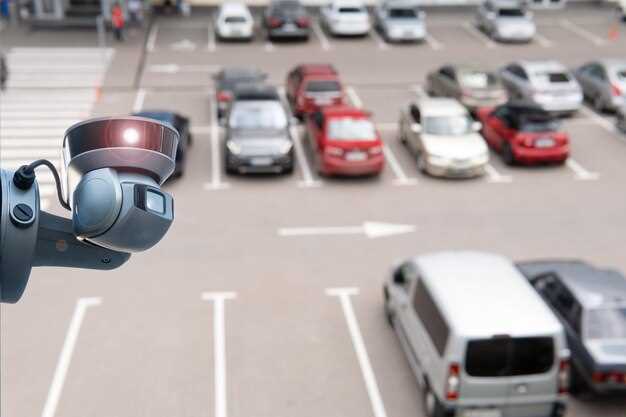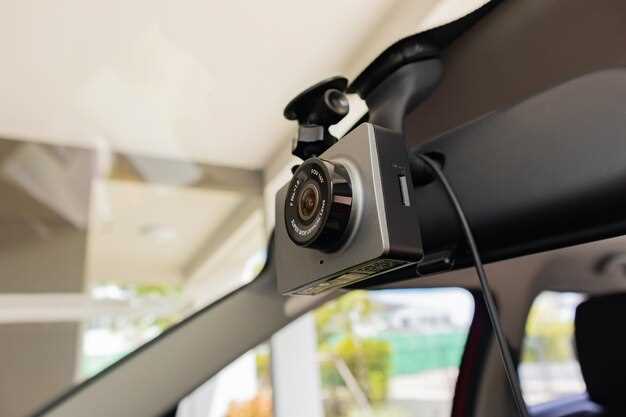
The evolution of electric vehicles (EVs) has not only transformed the way we think about transportation but has also brought to light the importance of security in modern driving. As the adoption of EVs continues to rise, integrated cameras and safety sensors are becoming essential components that enhance the overall security of these vehicles. These advanced technologies provide real-time monitoring, allowing drivers to stay vigilant against potential threats on the road.
With the increasing number of EVs on the road, the need for comprehensive security measures is more pressing than ever. Cameras embedded within the vehicle serve multiple purposes, from providing drivers with enhanced visibility through advanced driver-assistance systems (ADAS) to recording events that may occur while driving. This level of surveillance not only aids in accident prevention but also serves as a valuable tool in protecting against theft and vandalism.
Moreover, safety sensors complement the functionality of integrated cameras, offering additional layers of protection. These sensors are strategically placed around the vehicle to detect obstacles, monitor blind spots, and even alert drivers to potential hazards. Together, these technologies create a robust security framework that not only enhances the safety of the driver and passengers but also fosters a sense of confidence while on the road.
How Integrated Cameras Improve Theft Prevention in Electric Vehicles
The integration of cameras in electric vehicles (EVs) plays a pivotal role in enhancing theft prevention measures. These advanced systems provide real-time monitoring and surveillance, which are crucial for deterring potential thieves. By utilizing high-definition imaging and advanced analytics, the cameras can effectively capture any suspicious activities around the vehicle.
One of the primary benefits of integrated cameras is their capability to provide a 360-degree view of the surroundings. This comprehensive coverage ensures that blind spots are minimized, allowing owners to monitor their EVs from various angles. Additionally, the footage captured can be used as evidence in case of a theft, increasing the chances of recovery for the vehicle.
Moreover, the integration of artificial intelligence with these cameras enhances their functionality. AI can identify unusual behaviors or movements, triggering alerts to the owner or law enforcement. This proactive approach not only helps in immediate threat detection but also serves as a powerful deterrent against theft.
Furthermore, many EVs come equipped with geofencing capabilities, wherein cameras work in conjunction with safety sensors to create virtual boundaries. If the vehicle is moved outside these predefined zones, the owner receives instant notifications, allowing for prompt action and monitoring.
In conclusion, the incorporation of integrated cameras into electric vehicles significantly improves theft prevention. With advanced monitoring capabilities, AI-driven analytics, and geofencing features, these systems provide a robust safety net for EV owners. As technology continues to evolve, the effectiveness of these safety measures will only increase, contributing to a more secure driving experience.
The Role of Safety Sensors in Enhancing Driver Awareness

Safety sensors in electric vehicles (EVs) play a crucial role in improving driver awareness by providing real-time feedback about the surrounding environment. These sensors utilize advanced technologies, such as radar, lidar, and ultrasonic systems, to detect obstacles, pedestrians, and other vehicles. By continually monitoring the vehicle’s vicinity, safety sensors empower drivers with the information needed to make informed decisions while driving.
One of the primary functions of safety sensors is to assist in collision avoidance. They alert drivers to potential hazards, thereby reducing the likelihood of accidents. For instance, proximity sensors can signal when a driver is approaching an object too closely, allowing for timely corrective action. This immediate feedback enhances situational awareness and helps drivers stay focused on the road.
Another significant aspect of safety sensors is their capability to monitor blind spots. Many vehicles incorporate blind spot detection systems that utilize sensors to identify vehicles hidden from the driver’s view. This feature is essential for safe lane changes and merges, as it provides auditory or visual alerts, prompting drivers to check their mirrors before maneuvering.
Additionally, safety sensors contribute to safe parking practices. Parking assist systems leverage cameras and proximity sensors to guide drivers into parking spaces, providing visual cues and warnings to ensure a safe parking experience. This not only alleviates the stress of parking but also minimizes the risk of accidents in tight spaces.
Incorporating safety sensors into the driving experience fosters greater confidence and reduces cognitive load. By alleviating the driver’s need to constantly scan for potential dangers, these systems allow for enhanced concentration on the road ahead. As a result, drivers can react more promptly to emerging threats, ultimately contributing to overall driving safety.
In conclusion, safety sensors significantly enhance driver awareness, promoting a safer driving environment. By providing essential information about surroundings and potential hazards, these systems contribute to reducing accidents and improving the overall safety of electric vehicles.
Practical Considerations for Implementing Camera Systems in EVs

Incorporating camera systems into electric vehicles (EVs) significantly enhances safety and security during driving. However, several practical considerations must be addressed to ensure successful implementation.
1. System Integration: The camera systems should seamlessly integrate with existing vehicle components, including the central processing unit and safety sensors. This ensures real-time data fusion, allowing for improved situational awareness and accurate hazard detection.
2. Camera Placement: Strategic placement of cameras is crucial. Cameras must be positioned to provide comprehensive coverage of blind spots, rear views, and side views. They should also be mounted securely to withstand vibrations and external conditions while maintaining optimal field of vision.
3. Environmental Adaptability: The chosen camera systems should perform reliably in various weather conditions. It’s essential to select models that are resistant to glare, fog, rain, and low-light scenarios to guarantee consistent performance and safety during all driving conditions.
4. Data Processing and Latency: The camera’s data processing capabilities must be robust to minimize latency. Quick data analysis is critical for real-time decision-making and response, especially in emergency situations. Low-latency systems enhance overall driving safety.
5. User Interface: An intuitive user interface is essential for drivers to interact with the camera system without distraction. Visual alerts, clear displays, and ease of access to camera feeds enhance driver awareness, further improving safety.
6. Compliance with Regulations: Before implementation, it is imperative to ensure that the camera systems meet regulatory standards for automotive safety. Adhering to these guidelines not only promotes safety but also assists in legal compliance and potential insurance benefits.
7. Maintenance and Updates: Regular maintenance checks and software updates are vital for sustaining the efficiency of camera systems. These practices ensure that the systems remain functional and adapt to new technologies or safety protocols, contributing to long-term driving safety.
By addressing these considerations, manufacturers can effectively enhance the capabilities of electric vehicles, prioritizing both driver safety and the overall security of the vehicle.


